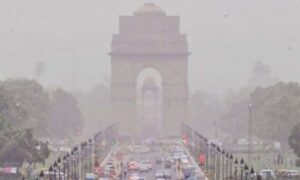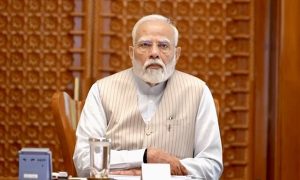As the burning of crop stubble, considered one of the reasons behind the spike in pollution at this time of the year, continues in Punjab and Haryana, conditions could deteriorate further on Tuesday, according to an early warning system.
Delhi’s air quality worsened on Monday when the levels of particulate matter, or tiny pollutants that trigger health hazards, shot up by up to four times above the permissible mark after a gap of four months.
As the burning of crop stubble, considered one of the reasons behind the spike in pollution at this time of the year, continues in Punjab and Haryana, conditions could deteriorate further on Tuesday, according to an early warning system run by Pune’s Indian Institute of Tropical Meteorology and Safar, which functions under the ministry of earth sciences.
Delhi’s air quality index (AQI) on Monday was 367, which indicates ‘very poor’ air quality. On a scale of 0-500, AQI in the range of 0-50 is considered ‘good’, 51-100 ‘satisfactory’, 101-200 ‘moderate’, 201-300 ‘poor’, 301-400 ‘very poor’ and 401-500 ‘severe’.
“This is the sixth consecutive day that the air quality has remained in the very poor category,” said an official of the Central Pollution Control Board (CPCB).
Conditions in the satellite towns of Gurugram, Noida, Faridabad, and Ghaziabad were not any better, with the air quality in Ghaziabad breaching the ‘severe’ level. The AQI was 430 in Ghaziabad.
The official said levels of PM10 and PM2.5, too, shot up alarmingly, hovering around four times the permissible limits. Such high levels of particulate matter were last encountered in the second week of June when a huge amount of dust gushed into Delhi-NCR after of a dust storm in Rajasthan. PM 2.5 and PM10 pollutants are particulate matters that have a diameter of less than 2.5 and 10 micrometers, respectively.
Delhi’s early warning system, put in place on October 15, has said northwesterly winds have already started blowing. Also, the ventilation index, which determines how fast pollutants get dispersed, and wind speeds are expected to remain low over the next two days. This might help trap pollutants in the air.
Safar has forecast toxic fumes from stubble-burning regions of Punjab and Haryana would gush in, worsening the situation.
With Delhi engulfed in a thick haze, chief minister Arvind Kejriwal blamed stubble burning in neighbouring states for the deteriorating air quality.
“Pollution was under control throughout the year. But during this time of the year Delhi has to put up with suffocating pollution because of the BJP and Congress governments at the centre, Haryana and Punjab…,” he tweeted in Hindi.
Union environment minister Harsh Vardhan said, “I would request Kejriwal not to politicise the issue.”




























 WhatsApp us
WhatsApp us